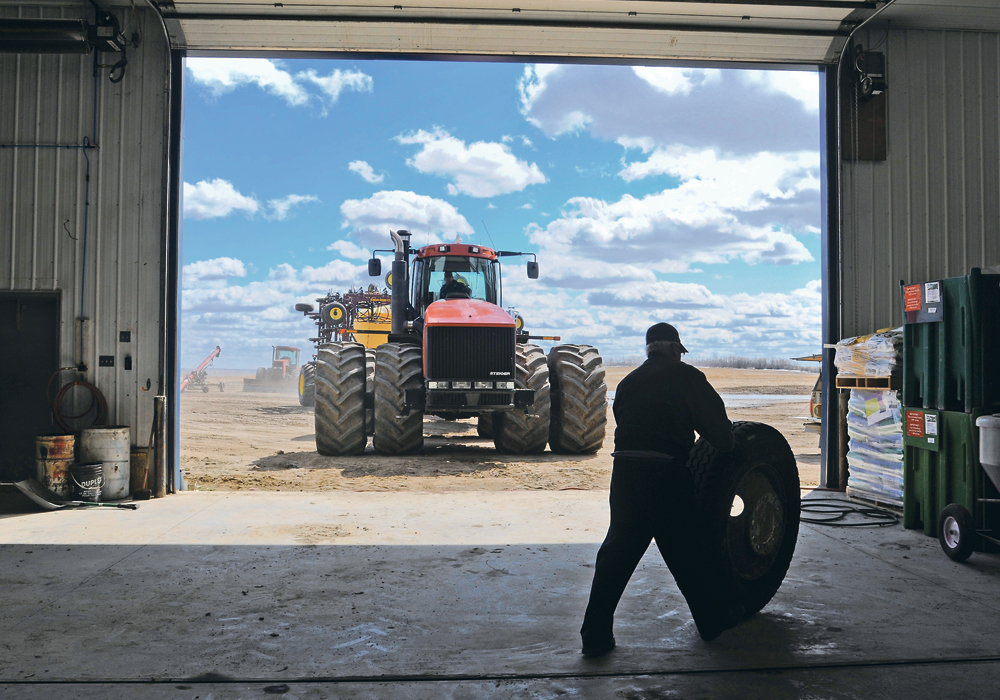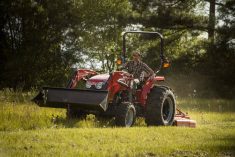Wash equipment thoroughly before parking in a cool, dry place; tires shouldn’t sit in chemicals, hydraulic fluid, fuel or oil
Implement tires are a major expense, which is why farmers over the years have tried so many storage tricks to prolong tire life and prevent the impact of winter storage.
Some of the most common methods include parking tires on wood, taking weight off the tires by raising the machine, covering tires with a sheet or tarp, or increasing air pressure to maximum p.s.i. If you have a big inventory of equipment, you can diddle away a lot of time following through on your favourite winter storage recipe.
Read Also

Growing garlic by the thousands in Manitoba
Grower holds a planting party day every fall as a crowd gathers to help put 28,000 plants, and sometimes more, into theground
But the fact is all those methods are just filling time.
There are only a couple of actions an implement owner should take to help maximize tire life and ensure optimum performance the following spring, says David Graden, agricultural tire specialist with Michelin.
On the Michelin website, Graden says that after harvest is finished and machinery has been washed, producers should park the equipment in a cool, dry place.
Washing the equipment thoroughly will show evidence of any fluid leaking throughout the storage period.
Make sure the tires aren’t sitting in chemicals, hydraulic fluid, fuel or oil. Petroleum-based fluids will eat rubber and cause tires to crack at the contact area.
“I suggest raising tire pressure to the maximum recommended on the sidewall. As the ambient temperature falls, so does the p.s.i. in your tires. In addition there’s the natural loss of air pressure over time,” says Graden.
“When you return to pull things out of storage for the spring season, reset your tire pressures to the recommended p.s.i.
He says determining when a tire is worn out has long made for interesting discussions. Most producers will probably say “when the tread is gone’. ”
Graden explains that Michelin Ag tires are standard R-1W with specific rubber compounds and lugs designed to wear more slowly and more consistently than R-1 competition tires. By design, when a Michelin Ag tire is deemed by many to be worn out, there is still plenty of tread with sharp biting edges with a consistent void ratio.
“But modern rubber is like bread in the pantry. It has a limited shelf life. Aromatic oils are no longer used in tire rubber, so it begins to dry out as the tire ages.
“For example, let’s say a typical tractor tire will last about 12 years. But the sidewalls begin to show significant age and look like they’re reaching the end of their life. In many applications, due to our design, the tires will continue to perform and do their work efficiently with minimal slip. Many folks add a tube and use as much of the remaining tread as possible.
“If you want to keep an eye on your tread and track, here are my thoughts. Michelin recommends taking tread measurements at the centre of the tire, at the lug nose. If your tire pressures are set to recommended p.s.i. for the weight carried, your tires should wear nice and evenly across the face of each lug. If your tires are not wearing this way, you could have a mis-mounted tire or a mechanical issue causing that tire to wear unevenly.”


















